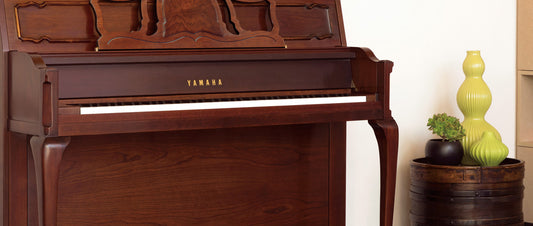


Before “The Smiths” played a single note together, the band’s unique musical style, lyrical subject matter, appearance, name, and direction were already worked out. After a short stint playing U.K. clubs, The Smiths gained a loyal following & recording contract with Rough Trade/Sire Records in 1983. “The Smiths” LP made its official debut in February 1984. The band had enough material stockpiled from “The Smiths” sessions to release a 2nd LP (Hatful of Hollow) only a couple of months later (UK only).
“The one-two punch of “The Smiths” and Hatful of Hollow swiftly elevated the band from a popular local act to stardom (especially in the U.K.) and remain popular long after their 1987 breakup. “The Smiths” debut Album reached #2 in the U.K. and charted for an amazing 33 weeks. The Smiths released 7 albums during their time together, all reaching the top 40, most reaching the top 5. Although The Smiths never achieved Super-Star status outside the U.K., the band is an alternative favorite around the world, credited for paving the way for “Brit Pop” bands like Stone Roses, and Oasis. Nealy 35 years after they split, The Smiths are still an extremely influential force on both sides of the pond.

Lead vocalist, lyricist, and outspoken Frontman Morrissey aside, the Smiths owe most of their unique sound to guitarist Johnny Marr. His fresh approach and new school Guitar technique are the bedrock of “The Smiths” sound. Although Marr (like most electric guitarists) is particular about the gear he uses, there is nothing unusual or unorthodox about his choices. If you really want to sound like Johnny Marr, you’ll need to understand the musical boundaries he laid down for himself, when forging “The Smiths” sound.

For Marr, making a name for himself, and finding his own voice and style meant avoiding clichés and stock riffs that defined the 70’s Guitar hero: No power chords, blues runs, R&B rhythms, runaway solos, or gratuitous use of distortion. Most guitarists would love to be compared to Rock Gods like Pete Townshend, Eric Clapton, Mick Ronson, or Richie Blackmore, but Marr wanted no part of 70’s Guitar Culture (though things have changed a bit over the years) Johnny Marr set out to revitalize guitar-playing styles that were more common in the late 50s and early ’60s.
An aggressive and powerful-sounding guitar was fine with Marr, as long as it came from his style, not his tone (evident in his common use of hard-picked arpeggios). Marr’s gear is somewhat basic compared to complex rigs used by some of his contemporaries. Marr knows how to choose a guitar and amp that inspires himself, and the listener, but knows it’s the player that makes the gear come alive, not the other way around.
20-year-old Johnny Marr is no dummy, nor is he naïve. Marr knew that a recording contract didn’t guarantee money, fame, or success. However, it might mean he could add a nice guitar to his collection. Marr heard stories of early British Invasion guitarists getting their first great guitar (on the record company tab) from NYC’s famed “Music District” on West 48th Street. Marr already had a 1954 Fender Tele, Epiphone Casino, and a pair of Rickenbacker 330s (a 6 and a 12 string). Marr didn’t need another guitar, but any guitarist will tell you- once you get started it’s kinda hard to stop.
The conversation between the Smiths and Sire records must have gone something like this: Johnny Marr: If you want us to sign with Sire, I have one more condition…. I’ll need a Guitar….
Ritchie Friedman of We Buy Guitars on 48th St. remembers the encounter: “My friend Seymore Stein owned Sire records, and always brought in his newest acts, to shop for gear”. Friedman confirmed that Marr’s famous Cherry Red 1959 Gibson ES-355 (the one that inspired Noel Gallagher of Oasis) came from his shop. Most of “The Smiths” and “Hatful of Hollow” smack of the bright tones of Marr’s Fender Telecaster, (This Charming Man*, in peculiar). Songs with the more powerful, thicker tones like “Look who’s miserable now” and “How soon is Now” was written on Marr’s newly acquired Cherry Gibson ES-355, minutes after he got it home.
Marr occasionally uses an open E tuning (Headmaster Ritual) or open A tuning (slide on “How soon is now”). Tuning up a half or whole step (to complement Morrissey’s comfortable singing range) is also common. *Marr plays his Rickenbacker 330/6 on the Television show “Top of the Pops” (This Charming Man) but confirms his Tele is the guitar used on the track and most of the first two albums.
When Marr plays “Smiths-era’ classics in live concerts, he sticks with the Jag. The tone brings you right back to 1984- It’s almost hard to believe he never used Fenders offset-body classic back in the day. We’ve picked out a few “Johnny Marr” style guitars that will fit any budget or playing level.

Anyone with a working knowledge of Classic amp sounds, won’t be surprised to learn Johnny Marr relied on Fender amps to get the job done. Fender “combo” amps designed in the 50 and 60’s are voiced with strong bass, subdued midrange, and pronounced highs. Fenders scooped EQ curve and “clean until pushed” sounds are hallmarks of the Fender amp tone. Marr’s unmistakably warm, but bright tone is textbook “Fender on Fender” (Tele and Twin in this case) on “This charming man” Fender’s more luxurious or ‘Deluxe” amps of the 50’s and 60’s have features like a built-in spring Reverb tank, and Vibrato (Tremolo) channel. Johnny Marr reports he still owns and sometimes plays the amps used on the first two Smiths records- A tweed Fender Twin, Black-panel Fender Twin Reverb, Silver-panel Fender Twin Reverb, and the one Marr calls his favorite-A black panel Fender Deluxe Reverb.
Fender ‘65 Twin Reverb Vintage Reissue Guitar Amp
Shop NowPart of Johnny Marr’s universal, and ongoing appeal is his natural-sounding guitar tone, but he did use effects from time to time. Marr recalls using a Roland JC-120 amp, just for the icy-sounding chorus, an Ibanez CS-505 Chorus box, and a Boss GE-6 Graphic EQ that he still owns, and occasionally uses. The Smith’s breakout hit “How soon is Now” has an unmistakable guitar track that offers a peek into Johnny Marr’s creative use of common FXs, to create an uncommon result. Marr’s guitar track is based on a classic Bo Diddley beat, at a slower tempo, with a little overdrive, chorus, and a pair of Tremolo circuits providing the bedrock to The Smith’s “signature song.”
Close to 40 years after the Smiths exploded to the “Top of the Pop’s”, Marrs guitar tone still sounds distinctive, and timely. Perhaps that is the difference between a great old album and an Essential Classic.
-

The Impact of the Moog Theremin: A Brief History
The Theremin was invented around 1920 by Soviet Russian Scientist Leon Theremin. His creation was probably the first musical instrument that had no “acoustic” ancestors and definitely the first musical...
The Impact of the Moog Theremin: A Brief History
The Theremin was invented around 1920 by Soviet Russian Scientist Leon Theremin. His creation was probably the first musical instrument that had no “acoustic” ancestors and definitely the first musical...
-

Choosing the Right Gibson Acoustic
Choosing a Gibson was your first great move. Every Gibson acoustic guitar made today, is a direct descendant of the groundbreaking designs of the 30’s through the 60’s. Gibson has...
Choosing the Right Gibson Acoustic
Choosing a Gibson was your first great move. Every Gibson acoustic guitar made today, is a direct descendant of the groundbreaking designs of the 30’s through the 60’s. Gibson has...
-

Yamaha Musical Instruments: Empowering Music Cr...
Torakusu Yamaha the businessman, engineer, traditional and progressive minded genius made himself and the world a promise. He will bring the power and means to make music Traditional value and craftsmanship working...
Yamaha Musical Instruments: Empowering Music Cr...
Torakusu Yamaha the businessman, engineer, traditional and progressive minded genius made himself and the world a promise. He will bring the power and means to make music Traditional value and craftsmanship working...












